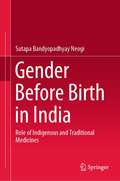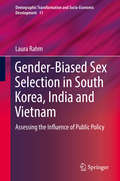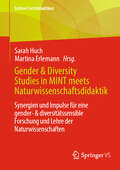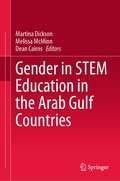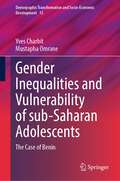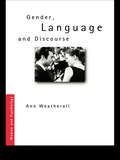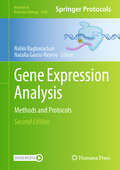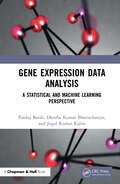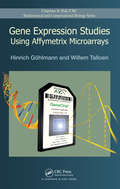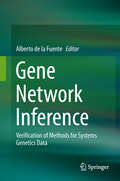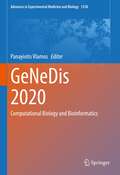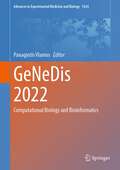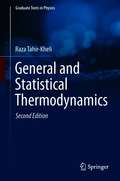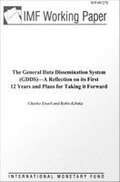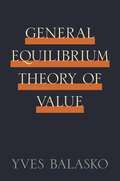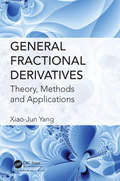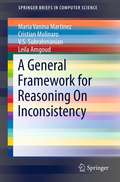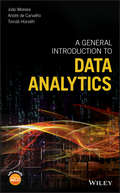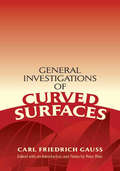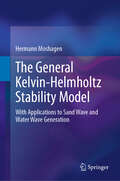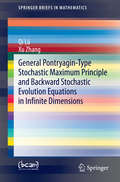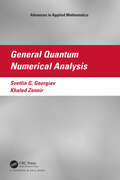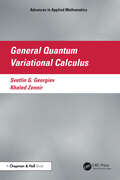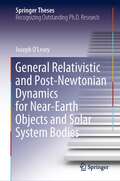- Table View
- List View
Gender and Family in Japan (Monograph Series of the Socio-Economic History Society, Japan)
by Nobuko Okuda Tetsuhiko TakaiThis book is the 6th volume of the Monograph Series of the Socio-Economic History Society, Japan. The book focuses on how economic developments changed the everyday lives of ordinary women in early-modern and modern Japan. Different from precedent gender studies, the spotlight here is on the daily activities and structural positions of women rather than feminist movements or activities of elite women. Using demography, anthropometrics, and labour economics, this book explicates childcare, physical development of girls, and women’s labour migration. The dynamics of ordinary women in prewar Japan may change deep-rooted images of women as oppressed beings. Using quantitative data multi-dimensionally with the latest statistical analysis methods, this book shows how Japanese economic historians can contribute to historians of gender and family who are interested in early-modern and modern Japan. The first part consists of four chapters that discuss women migrant workers in the Tokugawa period, women’s work, and family strategies in the underdeveloped regions of the country, conflicts between child-rearing and women’s work on family farms, and living standards of teenaged girls in early twentieth-century Japan. Those chapters provide a bridge between economic historians and feminist historians and articulate new research fields for both. The second part, comprising four book reviews, illustrates how the gender concept has been adopted in family and gender historiography in Japan.
Gender Before Birth in India: Role of Indigenous and Traditional Medicines
by Sutapa Bandyopadhyay NeogiThis book focuses on the role of the indigenous system of medicine or traditional medicines in gender selection in India. Issues such as the harmful effects of traditional practices on the health of the woman and the foetus during early pregnancy are explored in this book. It analyses the social and cultural practices and establishes linkages with modern methods of scientific investigations. It discusses how systematic exploration lends evidence of harmful traditional practices. The book is an important read for researchers, healthcare professionals and students in the field of medicine, public health and social sciences. It is an extremely valuable resource for all those engaged in research of traditional and modern systems of medicine.
Gender-Biased Sex Selection in South Korea, India and Vietnam: Assessing the Influence of Public Policy (Demographic Transformation and Socio-Economic Development #11)
by Laura RahmThis book provides an in-depth analysis of the influence of public policy on sex selection. Three Asian countries were chosen for the comparative policy analysis, namely South Korea, India and Vietnam that share in common a historical legacy of son preference, high levels of sex imbalances and active policy response to curbing the growing demographic masculinization of their nations. The research based on the data collected from field work in the three countries shows that despite the adoption of very similar anti-sex selection policies the outcomes have been markedly different for each of the three countries. These unexpected diverse outcomes are explained partly by their different historical and cultural contexts, and partly to the different social, political and economic institutions and dynamics. This monograph offers careful and detailed explanations of both within and across country diversities in policy outcomes, pointing to the importance and the limits of cross-national policy learning and adoption, and raising questions about the efficacy of international organizations’ current approaches to global policy and knowledge transfer.
Gender & Diversity Studies in MINT meets Naturwissenschaftsdidaktik: Synergien und Impulse für eine gender- & diversitätssensible Forschung und Lehre der Naturwissenschaften (Edition Fachdidaktiken)
by Martina Erlemann Sarah HuchGender und dessen Zusammenwirken mit weiteren Diversity-Dimensionen wie etwa soziale Herkunft, ein (zugeschriebener) Migrationshintergrund oder sexuelle Orientierung stehen an Hochschulen verstärkt im Fokus. Gefordert sind dabei auch gender- und diversitysensible Ausrichtungen der Forschung und Lehre der MINT-Fächer sowie der hochschulischen Lehramtsausbildung für MINT. Welche inhaltliche Relevanz haben Gender- und Diversity-Aspekte in Fachkultur, Forschungsinhalten sowie im Wissenschaftsverständnis der Naturwissenschaften? Wie strukturieren Geschlecht und andere soziale Differenzkategorien die Forschung? Wie kann eine Gender- und Diversity-Kompetenzen vermittelnde Lehrer*innenbildung aussehen?Auf diese Fragen geben die interdisziplinären Beiträge der Wissenschaftler*innen, etwa aus Physik, Biologie, Medizin, Feminist Science & Technology Studies sowie die naturwissenschaftlichen Fachdidaktiken Antworten. Ansätze sowie Wissensbestände der Gender & Diversity Studies in MINT werden mit den gender- und diversityausgerichteten Naturwissenschaftsdidaktiken zusammengeführt. Mit vielfältigen Anregungen ermutigen sie zu einer gender- und diversityorientierten Ausrichtung der (eigenen) Forschung und Lehre.
Gender in STEM Education in the Arab Gulf Countries
by Martina Dickson Melissa McMinn Dean CairnsThis book explores the critical issues in gender and STEM education in the Arabian Gulf, written within a context of educational systems developing rapidly over recent decades. With the ever-growing need for a highly skilled, gender-inclusive STEM workforce, the issues raised in this book are more topical than ever. It presents chapters from various sectors such as children’s perceptions of science, scientists and their work, adolescent and university years by studying large-scale secondary data variations across countries in the region and finally presenting work relating to gender in STEM education. The book closes with a chapter on factors of success in female leaders’ STEM career journeys. It offers recommendations for both policy and practices in gender equity in the STEM workplace, based on their experiences. This book is written in a highly accessible yet academic manner. It is an essential resource for a wide-ranging audience interested in the complex relationships between gender and STEM.
Gender Inequalities and Vulnerability of sub-Saharan Adolescents: The Case of Benin (Demographic Transformation and Socio-Economic Development #15)
by Yves Charbit Mustapha OmraneThis book analyses the vulnerability of adolescent girls, which results from cumulative inequalities: gender, lack of education, residential, and poverty. It is based on original analyses of data from the national survey carried out by the National Institute of Statistics and Economic Analysis in collaboration with UNICEF.The book discusses three main themes. First, the experience of adolescence: access to globalization, via access to TIC (Trusted Internet Connections) and mass media; subjective well-being; smoking and alcohol consumption; child discipline and domestic violence are discussed. Secondly, the book focusses on the beginning of fertile life: child marriage; early pregnancy; prenatal care; birth weight and breastfeeding. HIV/AIDS and sexuality.The third theme touches on the potential contribution of adolescents to harvesting the demographic dividend: fertility and contraception; postnatal care and vaccination of children; pre-school learning; education and gender; household health vulnerability (water and sanitation). On the basis of the analyses of data, implications regarding concrete policy measures aimed at reducing the vulnerability of adolescents are identified at the end of each chapter.Through the richness of the analyses and the methodological rigor, this book provides an interesting read to both specialists and non-specialists interested in adolescence and the future of Benin, Africa and beyond.The [basis of the] English translation of this book from its French original manuscript was done with the help of artificial intelligence. A subsequent human revision of the content was done by the author.
Gender, Language and Discourse (Women and Psychology)
by Ann WeatherallIs language sexist? Do women and men speak different languages?Gender, Language and Discourse uniquely examines the contribution that psychological research - in particular, discursive psychology - has made to answering these questions. Until now, books on gender and language have tended to be from the sociolinguistic perspective and have focused on one of two issues - sexism in language or gender differences in speech. This book considers both issues and develops the idea that they shouldn't be viewed as mutually exclusive endeavours but rather as part of the same process - the social construction of gender. Ann Weatherall highlights the fresh insights that a social constructionist approach has made to these debates, and presents recent theoretical developments and empirical work in discursive psychology relevant to gender and language.Gender, Language and Discourse provides the most comprehensive and up-to-date discussion of the gender and language field from a psychological perspective. It will be invaluable to students and researchers in social psychology, cultural studies, education, linguistic anthropology and women's studies.
Gene Expression Analysis: Methods and Protocols (Methods in Molecular Biology #2880)
by Nalini Raghavachari Natalia Garcia-ReyeroThis second edition volume expands on the previous edition with updates on the latest methodologies in the transcriptomics field. The chapters in this book cover topics such as spatial omics, long-read sequencing technology, tissue microarrays, analysis of saliva and extracellular vesicles, machine learning and artificial intelligence-based approaches for analysis of singe cells transcriptome, and large sets of data on multi-omics including transcriptomics. Written in the highly successful Methods in Molecular Biology series format, chapters include introductions to their respective topics, lists of the necessary materials and reagents, step-by-step, readily reproducible laboratory protocols, and tips on troubleshooting and avoiding known pitfalls. Cutting-edge and practical, Gene Expression Analysis: Methods and Protocols, Second Edition is a valuable resource for advanced undergraduate and graduate students studying gene expression analysis, and scientists interested in learning more about this rapidly advancing field.
Gene Expression Data Analysis: A Statistical and Machine Learning Perspective
by Dhruba Kumar Bhattacharyya Jugal Kumar Kalita Pankaj BarahDevelopment of high-throughput technologies in molecular biology during the last two decades has contributed to the production of tremendous amounts of data. Microarray and RNA sequencing are two such widely used high-throughput technologies for simultaneously monitoring the expression patterns of thousands of genes. Data produced from such experiments are voluminous (both in dimensionality and numbers of instances) and evolving in nature. Analysis of huge amounts of data toward the identification of interesting patterns that are relevant for a given biological question requires high-performance computational infrastructure as well as efficient machine learning algorithms. Cross-communication of ideas between biologists and computer scientists remains a big challenge. Gene Expression Data Analysis: A Statistical and Machine Learning Perspective has been written with a multidisciplinary audience in mind. The book discusses gene expression data analysis from molecular biology, machine learning, and statistical perspectives. Readers will be able to acquire both theoretical and practical knowledge of methods for identifying novel patterns of high biological significance. To measure the effectiveness of such algorithms, we discuss statistical and biological performance metrics that can be used in real life or in a simulated environment. This book discusses a large number of benchmark algorithms, tools, systems, and repositories that are commonly used in analyzing gene expression data and validating results. This book will benefit students, researchers, and practitioners in biology, medicine, and computer science by enabling them to acquire in-depth knowledge in statistical and machine-learning-based methods for analyzing gene expression data. Key Features: An introduction to the Central Dogma of molecular biology and information flow in biological systems A systematic overview of the methods for generating gene expression data Background knowledge on statistical modeling and machine learning techniques Detailed methodology of analyzing gene expression data with an example case study Clustering methods for finding co-expression patterns from microarray, bulkRNA, and scRNA data A large number of practical tools, systems, and repositories that are useful for computational biologists to create, analyze, and validate biologically relevant gene expression patterns Suitable for multidisciplinary researchers and practitioners in computer science and biological sciences
Gene Expression Studies Using Affymetrix Microarrays (Chapman & Hall/CRC Computational Biology Series)
by Hinrich Gohlmann Willem TalloenThe Affymetrix GeneChip system is one of the most widely adapted microarray platforms. However, due to the overwhelming amount of information available, many Affymetrix users tend to stick to the default analysis settings and may end up drawing sub-optimal conclusions. Written by a molecular biologist and a biostatistician with a combined decade of
Gene Network Inference
by Alberto FuenteThis book presents recent methods for Systems Genetics (SG) data analysis, applying them to a suite of simulated SG benchmark datasets. Each of the chapter authors received the same datasets to evaluate the performance of their method to better understand which algorithms are most useful for obtaining reliable models from SG datasets. The knowledge gained from this benchmarking study will ultimately allow these algorithms to be used with confidence for SG studies e. g. of complex human diseases or food crop improvement. The book is primarily intended for researchers with a background in the life sciences, not for computer scientists or statisticians.
GeNeDis 2020: Computational Biology and Bioinformatics (Advances in Experimental Medicine and Biology #1338)
by Panayiotis VlamosThe 4th World Congress on Genetics, Geriatrics and Neurodegenerative Diseases Research (GeNeDis 2020) focuses on the latest major challenges in scientific research, new drug targets, the development of novel biomarkers, new imaging techniques, novel protocols for early diagnosis of neurodegenerative diseases, and several other scientific advances, with the aim of better, safer, and healthier aging. Computational methodologies for implementation on the discovery of biomarkers for neurodegenerative diseases are extensively discussed. This volume focuses on the sessions from the conference regarding computational biology and bioinformatics.
GeNeDis 2022: Computational Biology and Bioinformatics (Advances in Experimental Medicine and Biology #1424)
by Panagiotis VlamosThe 5th World Congress on Genetics, Geriatrics and Neurodegenerative Diseases Research (GeNeDis 2022) focuses on the latest major challenges in scientific research, new drug targets, the development of novel biomarkers, new imaging techniques, novel protocols for early diagnosis of neurodegenerative diseases, and several other scientific advances, with the aim of better, safer, and healthier aging. Computational methodologies for implementation on the discovery of biomarkers for neurodegenerative diseases are extensively discussed. This volume focuses on the sessions from the conference regarding computational biology and bioinformatics.
General and Statistical Thermodynamics (Graduate Texts in Physics)
by Raza Tahir-KheliThis textbook provides comprehensive information on general and statistical thermodynamics. It begins with an introductory statistical mechanics course, deriving all the important formulae meticulously and explicitly, without mathematical shortcuts. In turn, the main part of the book focuses on in-depth discussions of the concepts and laws of thermodynamics, van der Waals, Kelvin and Claudius theories, ideal and real gases, thermodynamic potentials, phonons and all related aspects. To elucidate the concepts introduced and to provide practical problem-solving support, numerous carefully worked-out examples are included. The text is clearly written and punctuated with a number of interesting anecdotes. The book also provides alternative solutions to problems and second equivalent explanations of important physical concepts. This second edition has been expanded to cover the foundations of superconductivity with new chapters on Cooper pairs, the Bogoliubov transformation, and superconductivity. It is suitable as a main thermodynamics textbook for upper-undergraduate students and provides extensive coverage, allowing instructors to ‘pick and choose’ the elements that best match their class profile.
The General Data Dissemination System (GDDS)--A Reflection on its First 12 Years and Plans for Taking it Forward
by Charles Enoch Robin KibukaA report from the International Monetary Fund.
General Equilibrium Theory of Value
by Yves BalaskoThe concept of general equilibrium, one of the central components of economic theory, explains the behavior of supply, demand, and prices by showing that supply and demand exist in balance through pricing mechanisms. The mathematical tools and properties for this theory have developed over time to accommodate and incorporate developments in economic theory, from multiple markets and economic agents to theories of production. Yves Balasko offers an extensive, up-to-date look at the standard theory of general equilibrium, to which he has been a major contributor. This book explains how the equilibrium manifold approach can be usefully applied to the general equilibrium model, from basic consumer theory and exchange economies to models with private ownership of production. Balasko examines properties of the standard general equilibrium model that are beyond traditional existence and optimality. He applies the theory of smooth manifolds and mappings to the multiplicity of equilibrium solutions and related discontinuities of market prices. The economic concepts and differential topology methods presented in this book are accessible, clear, and relevant, and no prior knowledge of economic theory is necessary. General Equilibrium Theory of Value offers a comprehensive foundation for the most current models of economic theory and is ideally suited for graduate economics students, advanced undergraduates in mathematics, and researchers in the field.
General Fractional Derivatives: Theory, Methods and Applications
by Xiao-Jun YangGeneral Fractional Derivatives: Theory, Methods and Applications provides knowledge of the special functions with respect to another function, and the integro-differential operators where the integrals are of the convolution type and exist the singular, weakly singular and nonsingular kernels, which exhibit the fractional derivatives, fractional integrals, general fractional derivatives, and general fractional integrals of the constant and variable order without and with respect to another function due to the appearance of the power-law and complex herbivores to figure out the modern developments in theoretical and applied science. Features: Give some new results for fractional calculus of constant and variable orders. Discuss some new definitions for fractional calculus with respect to another function. Provide definitions for general fractional calculus of constant and variable orders. Report new results of general fractional calculus with respect to another function. Propose news special functions with respect to another function and their applications. Present new models for the anomalous relaxation and rheological behaviors. This book serves as a reference book and textbook for scientists and engineers in the fields of mathematics, physics, chemistry and engineering, senior undergraduate and graduate students. Dr. Xiao-Jun Yang is a full professor of Applied Mathematics and Mechanics, at China University of Mining and Technology, China. He is currently an editor of several scientific journals, such as Fractals, Applied Numerical Mathematics, Mathematical Modelling and Analysis, International Journal of Numerical Methods for Heat & Fluid Flow, and Thermal Science.
A General Framework for Reasoning On Inconsistency (SpringerBriefs in Computer Science)
by V. S. Subrahmanian Maria Vanina Martinez Leila Amgoud Cristian MolinaroThis SpringerBrief proposes a general framework for reasoning about inconsistency in a wide variety of logics, including inconsistency resolution methods that have not yet been studied. The proposed framework allows users to specify preferences on how to resolve inconsistency when there are multiple ways to do so. This empowers users to resolve inconsistency in data leveraging both their detailed knowledge of the data as well as their application needs. The brief shows that the framework is well-suited to handle inconsistency in several logics, and provides algorithms to compute preferred options. Finally, the brief shows that the framework not only captures several existing works, but also supports reasoning about inconsistency in several logics for which no such methods exist today.
A General Introduction to Data Analytics
by João Moreira André Carvalho Tomás HorvathA guide to the principles and methods of data analysis that does not require knowledge of statistics or programming A General Introduction to Data Analytics is an essential guide to understand and use data analytics. This book is written using easy-to-understand terms and does not require familiarity with statistics or programming. The authors—noted experts in the field—highlight an explanation of the intuition behind the basic data analytics techniques. The text also contains exercises and illustrative examples. Thought to be easily accessible to non-experts, the book provides motivation to the necessity of analyzing data. It explains how to visualize and summarize data, and how to find natural groups and frequent patterns in a dataset. The book also explores predictive tasks, be them classification or regression. Finally, the book discusses popular data analytic applications, like mining the web, information retrieval, social network analysis, working with text, and recommender systems. The learning resources offer: A guide to the reasoning behind data mining techniques A unique illustrative example that extends throughout all the chapters Exercises at the end of each chapter and larger projects at the end of each of the text’s two main parts Together with these learning resources, the book can be used in a 13-week course guide, one chapter per course topic. The book was written in a format that allows the understanding of the main data analytics concepts by non-mathematicians, non-statisticians and non-computer scientists interested in getting an introduction to data science. A General Introduction to Data Analytics is a basic guide to data analytics written in highly accessible terms.
General Investigations of Curved Surfaces: Edited with an Introduction and Notes by Peter Pesic
by Peter Pesic Adam Hiltebeitel James Morehead Karl Friedrich GaussGauss's theory of surfaces is among the purely mathematical achievements inspired by ideas that arose in connection with surveys of the surface of the earth. Long regarded as a masterpiece in content and form, this work features one of the author's most original contributions to mathematics--the discovery that Gauss termed the "Theorema Egregium." It consists of his penetrating definition of the concept of surface curvature and the theorem that the "Gauss curvature" is invariant under arbitrary isometric deformation of a curved surface. The profound effects of these concepts were soon generalized by Bernhard Riemann, and subsequent development included the important role of the Gauss-Riemann concept of curvature in modern relativity theory.This edition of Gauss's classic work features a new introduction, bibliography, and notes by science historian Peter Pesic. In addition, an informative appendix offers historical background.
The General Kelvin-Helmholtz Stability Model: With Applications to Sand Wave and Water Wave Generation
by Hermann MoshagenThis book presents a generalized version of the classical Kelvin-Helmholtz instability, a useful tool which allows for new approaches when studying stability problems in fluid mechanics, as well as its important applications. It begins by providing an introduction to hydrodynamic stability and the Kelvin-Helmholtz (KH) instability. The author then develops the general KH stability model for a multi-layer flow system, which includes the conventional KH instability as a special case. This book also includes the detailed discussion of two important applications of this model: the generation of sand waves in alluvial channels and the generation of wind waves on water. Additionally, the effects of nonlinearities and the use of computational methods to study KH instability are included. This book serves as a concise and modern treatment of the KH stability model with specific attention paid to hydrodynamic stability analysis. It is ideal for graduate students interested in fluid dynamics as well as scientists and engineers in the fields of oceanography, geophysics, offshore engineering, and more.
General Pontryagin-Type Stochastic Maximum Principle and Backward Stochastic Evolution Equations in Infinite Dimensions
by Qi Lü Xu ZhangThe classical Pontryagin maximum principle (addressed to deterministic finite dimensional control systems) is one of the three milestones in modern control theory. The corresponding theory is by now well-developed in the deterministic infinite dimensional setting and for the stochastic differential equations. However, very little is known about the same problem but for controlled stochastic (infinite dimensional) evolution equations when the diffusion term contains the control variables and the control domains are allowed to be non-convex. Indeed, it is one of the longstanding unsolved problems in stochastic control theory to establish the Pontryagin type maximum principle for this kind of general control systems: this book aims to give a solution to this problem. This book will be useful for both beginners and experts who are interested in optimal control theory for stochastic evolution equations.
General Quantum Numerical Analysis (ISSN)
by Svetlin G. Georgiev Khaled ZennirThis book is focused on the qualitative theory of general quantum calculus, the modern name for the investigation of calculus without limits. It centers on designing, analysing and applying computational techniques for general quantum differential equations. The quantum calculus or q-calculus began with F.H. Jackson in the early twentieth century, but this kind of calculus had already been worked out by Euler and Jacobi. Recently, it has aroused interest due to high demand of mathematics that models quantum computing and the connection between mathematics and physics.Quantum calculus has many applications in different mathematical areas such as number theory, combinatorics, orthogonal polynomials, basic hyper-geometric functions and other sciences such as quantum theory, mechanics and the theory of relativity.The authors summarize the most recent contributions in this area. General Quantum Numerical Analysis is intended for senior undergraduate students and beginning graduate students of engineering and science courses. The twelve chapters in this book are pedagogically organized, each concluding with a section of practical problems.
General Quantum Variational Calculus (Advances in Applied Mathematics)
by Svetlin G. Georgiev Khaled ZennirQuantum calculus is the modern name for the investigation of calculus without limits. Quantum calculus, or q-calculus, began with F.H. Jackson in the early twentieth century, but this kind of calculus had already been worked out by renowned mathematicians Euler and Jacobi.Lately, quantum calculus has aroused a great amount of interest due to the high demand of mathematics that model quantum computing. The q-calculus appeared as a connection between mathematics and physics. It has a lot of applications in different mathematical areas such as number theory, combinatorics, orthogonal polynomials, basic hypergeometric functions and other quantum theory sciences, mechanics, and the theory of relativity. Recently, the concept of general quantum difference operators that generalize quantum calculus has been defined. General Quantum Variational Calculus is specially designed for those who wish to understand this important mathematical concept, as the text encompasses recent developments of general quantum variational calculus. The material is presented in a highly readable, mathematically solid format. Many practical problems are illustrated, displaying a wide variety of solution techniques.This book is addressed to a wide audience of specialists such as mathematicians, physicists, engineers, and biologists. It can be used as a textbook at the graduate level and as a reference for several disciplines.
General Relativistic and Post-Newtonian Dynamics for Near-Earth Objects and Solar System Bodies (Springer Theses)
by Joseph O’LearyOwing to the increased accuracy requirements in fields such as astrometry and geodesy the general theory of relativity must be taken into account for any mission requiring highly accurate orbit information and for practically all observation and measurement techniques. This book highlights the confluence of Applied Mathematics, Physics and Space Science as seen from Einstein's general theory of relativity and aims to bridge the gap between theoretical and applied domains. The book investigates three distinct areas of general relativity: Exact solutions of the Einstein field equations of gravitation. Dynamics of near-Earth objects and solar system bodies. Relativistic orbitography. This book is an updated and expanded version of the author’s PhD thesis which was awarded the International Astronomical Union PhD prize in Division A: Fundamental Astronomy. Included is a new introduction aimed at graduate students of General Relativity and extended discussions and results on topics in post-Newtonian dynamics and general relativistic spacecraft propagation.

